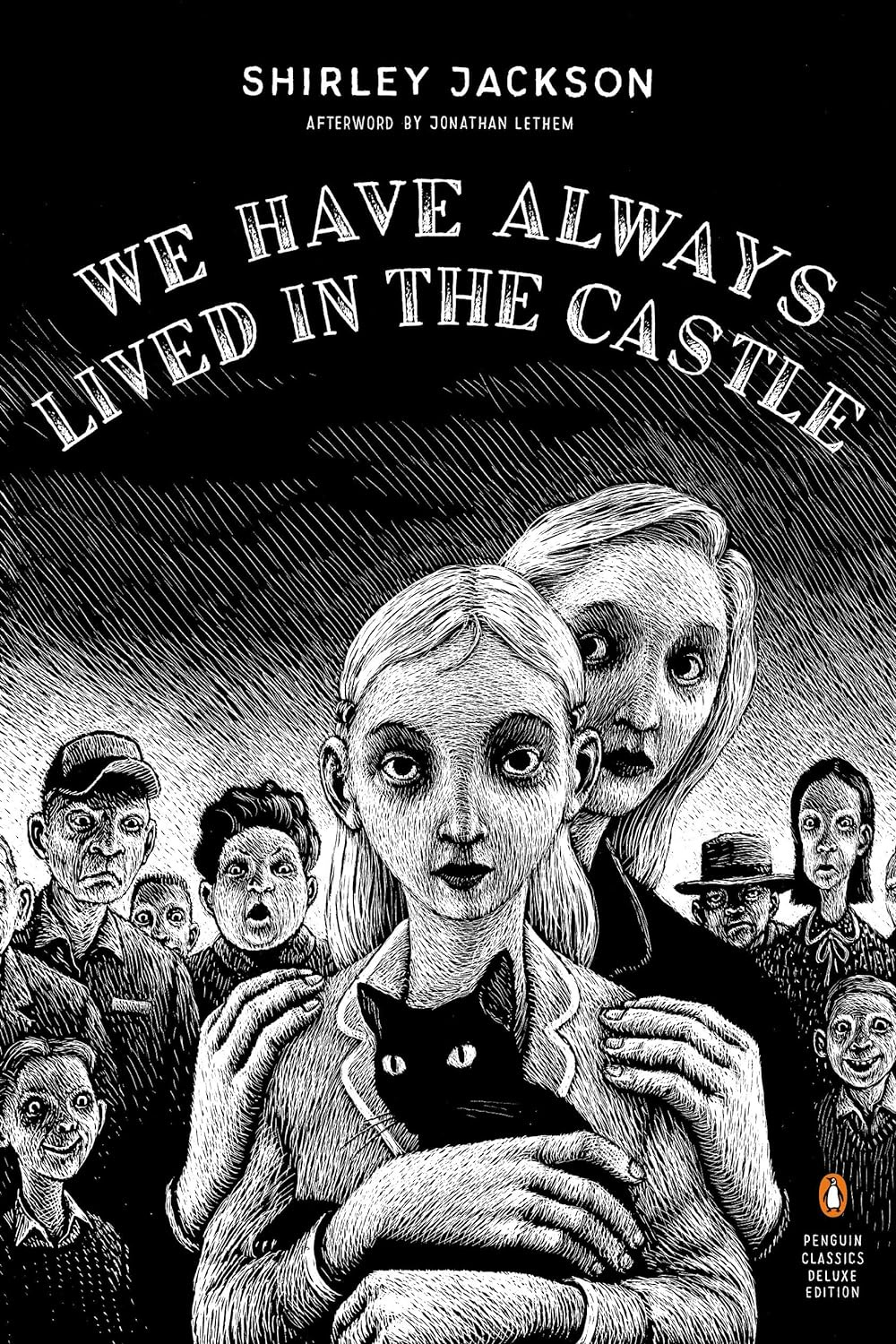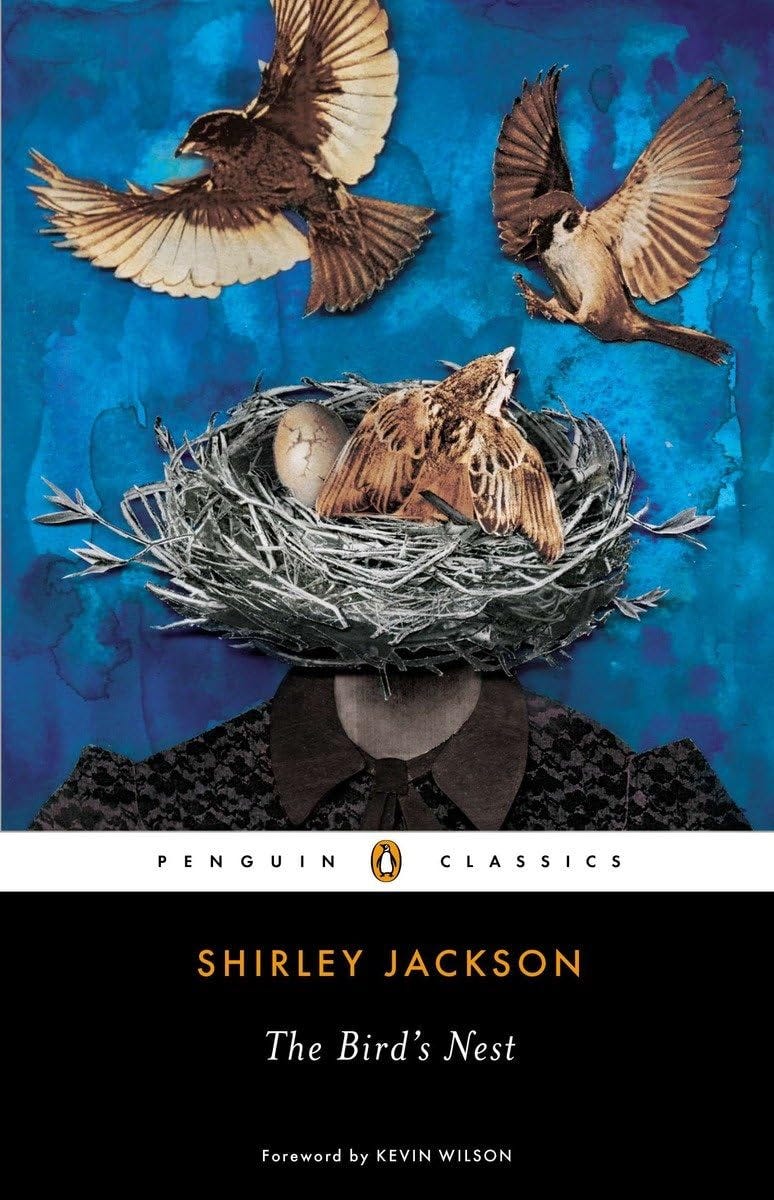The Everyday Madness of Shirley Jackson
Exploring Her Classic Novels: ‘We Have Always Lived in the Castle,’ ‘The Haunting of Hill House,’ Others
Shirley Jackson is probably most famous for her 1948 New Yorker short story, “The Lottery.” It instantly went viral and, as writer Ruth Franklin says, it’s still stoking conversations all these years later. But we’ve done Jackson a disservice.
I can’t tell you how many times I’ve heard Jackson’s work described as scary, presumably playing off the shock caused by “The Lottery.” In its collection, The Lottery and Other Stories, Picador includes two dozen more—as the jacket copy says—“equally terrifying” pieces.
Terrifying? I read the whole lot, cover to cover, and not one spiked my pulse or drove me to double check the door locks, though I did find several quite hilarious. The reality is that Jackson is far more Wes Anderson than Wes Craven, something her novels make abundantly clear.
What Have We Here?
I recently read all six: The Road Through the Wall (1948), Hangsaman (1951), The Bird’s Nest (1954), The Sundial (1958), The Haunting of Hill House (1959), and We Have Always Lived in the Castle (1962).
The Wes Anderson bit applies especially to The Sundial and We Have Always Lived in the Castle. I can already see the sets, the cast, the whole zany production. But some of the novels are somber: While Hangsaman’s family drama feels humorous—even laugh-out-loud funny—at the beginning, it descends into something far darker as the chapters progress. But it never morphs into horror or anything we’d think of as terrifying or frightening.
Critic Dan Kois noted the same thing. “My mass-market of Hangsaman was packaged,” he said,
as a traditional spine-tingler—“AN UNFORGETTABLE NOVEL OF SUSPENSE,” reads the front cover, “FROM THE AUTHOR OF ‘WE HAVE ALWAYS LIVED IN THE CASTLE,’ ETC.”—and I spent much of the novel expecting something gruesome to happen at every turn, the way it would in a contemporary Gothic.
But no. It’s not that kind of book. In fact, none of Jackson’s books are that kind of book. What they all have in common? It’s not terror or fright; it’s insanity. Shirley Jackson is the novelist of the unhinged—easiest to see by working backward through her bibliography.
Mad, Mad World
In We Have Always Lived in the Castle, the remnants of the venerable Blackwood family dwell in a stately old house rumored to shelter fantastic wealth—and likely a murderer. Years before, several members of the family, including Mom and Dad, were poisoned at the dinner table; the eldest daughter, Constance, was accused but acquitted of the crime. Was it just a terrible accident?
Following the catastrophe, the family resumed whatever semblance of normalcy they could muster, though their neighbors hold them in suspicion and contempt—made all the worse by the family’s oddball behavior. Reclusive Constance hides from town gossip and rarely leaves the house, Uncle Julian rehearses facts about the murders while descending into senility, and the younger daughter, Mary Katherine (“Merricat”), is consumed by magical thinking, paranoia, and sociopathy.
When cousin Charles arrives to claim the family wealth, Merricat’s darker side flares, as does the brutal vindictiveness of the town. By the end madness claims them all in one way or another, even as spasms of remorse ripple through the community and Constance and Merricat retreat even further from view.
The Haunting of Hill House isolates insanity in just one character. Convened by Dr. John Montague to study paranormal activity in an ancient house, several subjects experience inexplicable and disturbing phenomena while inside—Eleanor Vance most of all. Subject to hallucinations and paranoia, Eleanor’s mental state begins to slide, never to recover, despite the best efforts of Dr. Montague and the others.
Laugh if You Can
While such a description might sound like horror, the narrative never reaches that far. Instead, Jackson shows more interested in detailing Eleanor’s crackup and intentionally leavens the story with humor, such as the interference by Dr. Montague’s wife—a bossy, know-it-all spiritualist who constantly misreads what’s happening in Hill House.
Jackson’s absurd comedic sense comes through perhaps most of all in The Sundial. Once again, an old family home stands at the center of the tale. But this time the home promises to save its inhabitants, not drive them mad; it turns out they’re crazy enough already. Not to say they can’t get worse; predictably, they do.
The story tumbles into action when Orianna Halloran shoves her son and family heir down the stairs to his death, freeing her to assert dominion over the clan, the estate, and everyone who lives within its walls. Everyone more or less goes along with Orianna’s coup except Aunt Fanny, who supposedly receives visions from her dead father about the end of the world: Anyone who takes shelter within the Halloran home when the end comes will be saved. All others will be destroyed.
While any one of the family members could have put an end to the madness, they’re all swept along by the hysteria, mutually deluded for individual reasons, all petty, all bent on undercutting each other.
Absurdities quickly mount, such as when the family begins to burn the library books to clear shelf space for post-apocalyptic dried goods and doodads; or when a local group of end-times aficionados enthusiastically embrace the family only to be disappointed when their visions of the end conflict; or when Orianna imperiously begins wearing a crown as the future queen of the rejuvenated creation.
Losing Touch
Whereas the Halloran clan joins in collective psychosis, in The Bird’s Nest Elizabeth Richmond’s personality shatters into four distinct identities. Elizabeth, Beth, Betsy, and Bess all make various appearances through the book’s various narrators: Elizabeth herself, her psychiatrist, and her aunt and caretaker.
Elizabeth is a bit strange to begin with but progressively fragments as the story develops. Sometimes submissive, other times manic, and still other times manipulative, each identity plays off the others and those trying to help them. Notably, Jackson published The Bird’s Nest several years before Corbett H. Thigpen and Hervey M. Cleckley’s popular nonfiction account of multiple personality disorder, The Three Faces of Eve (1957), brought widespread attention to the phenomenon.
Natalie Waite also suffers psychological breakdown in Hangsaman. In this case, the book opens with life amid Natalie’s amusing but highly dysfunctional family. Her professional writer father, for instance, assigns her writing assignments and mercilessly critiques them.
Natalie, given to flights of imagination, soon shows signs of outright delusion and eventually paranoia. What is real? Who is real? By the end of the story, we’re left wondering if Natalie will utterly lose herself or find some sort of solid foundation—denied in her upbringing—upon which to build a sane life. We’re forced to give it low odds.
We’re all Mad
Having reached this far, we’re back to Jackson’s debut novel, 1948’s The Road Through the Wall. In some ways it feels like a much different book than its siblings. The action unfolds in a suburban neighborhood instead of a dilapidated Victorian mansion. It involves several seemingly normal families, instead of one pronouncedly oddball clan. Most obvious of all, it includes no one suffering from obvious mental illness. But look again.
Jackson’s postwar California suburb is new but its vices are old: pride, jealousy, exclusion, prejudice, cruelty. And as if the point weren’t clear enough, when a child is killed near the end of the story Jackson leaves the culprit ambiguous. She leaves the reader with the impression that the whole community is in one way or another responsible. And so The Road Through the Wall is really about insanity after all; Jackson is saying we’re all insane, those of us who live in the modern world and do so little to prevent our children from being destroyed by the environment we’ve so carefully cultivated for our own egos, ease, and ambitions.
The Sundial paints a similar version of this insight. As the Hallorans and a few hangers-on await the destruction of the world and its resplendent recreation outside the doors of the family manse, the youngest family member, Fancy, cries foul on the whole shebang. “Aunt Fanny keeps saying that there is going to be a lovely world,” she says,
all green and still and perfect and we are all going to live there and be peaceful and happy. That would be perfectly fine for me, except right here I live in a lovely world, all green and still and perfect, even though no one around here seems to be very peaceful or happy, but when I think about it this new world is going to have Aunt Fanny and my grandmother and you and Essex and the rest of these crazy people and my mother and what makes anyone think you’re going to be more happy or peaceful just because you’re the only ones left?
The family had missed the message emblazoned in gold-edged black gothic letters upon the mansion’s entry-way window. “WHEN SHALL WE LIVE IF NOT NOW?” The day for setting aside the worst of ourselves is today; the time for taking care of one another is now.
Anything else is madness. And when we think about it that way, the paranormal is far less haunting than the normal.
If, by the way, you’re new to Shirley Jackson and want to give her a try, here’s my ranking of the novels, starting with what I consider her best. Anyone could jump in at the top of the list and work their way down.
We Have Always Lived in the Castle
The Sundial
The Haunting of Hill House
Hangsaman
The Bird’s Nest
The Road Through the Wall
If you’ve read much Jackson, I’d love to hear your thoughts on her novels. Share those below.
Thanks for reading! If you enjoyed this post, please hit the ❤️ below and share it with your friends.
Not a subscriber? Take a moment and sign up. It’s free for now, and I’ll send you my top-fifteen quotes about books and reading. Thanks again!







Love love this. Have to put a plug in for "Life Among the Savages," which is described as a 'charming domestic memoir' but is also really smart. If I had a child-rearing manual, it was that, which I recently gave to my (adult) daughter. Perhaps there is a relationship between psychological horror and child-rearing: both are about keeping your composure when you have declining control over events and small people, who are always turning into strangers. If you are lucky, your children will be delightfully alien to you. Shirley Jackson taught me that.
https://www.penguinrandomhouse.com/books/318211/life-among-the-savages-by-shirley-jackson/
She was one of those authors who was a genre unto herself.